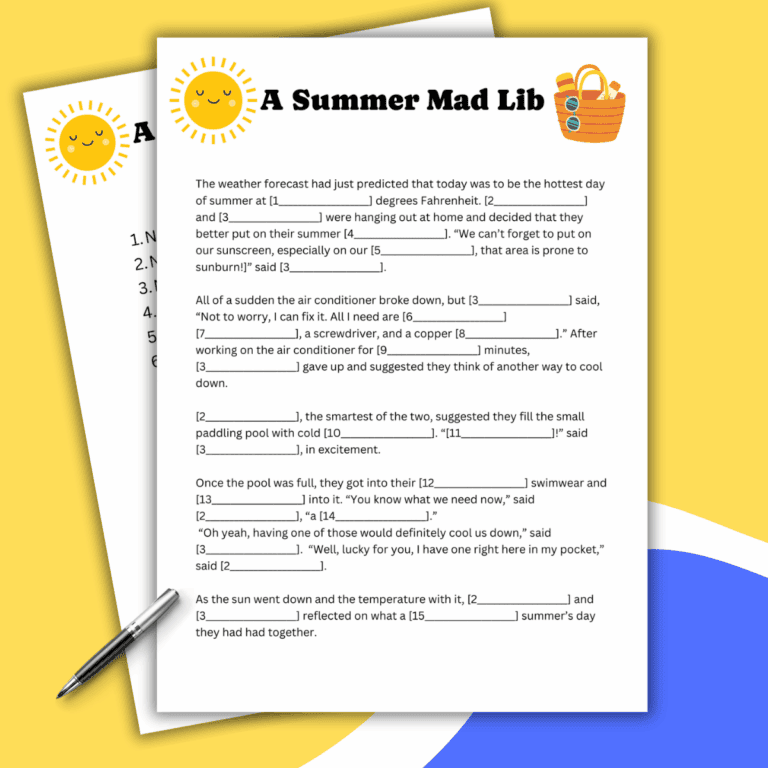Here is a quick guide on how to play Mad Libs, along with some tips on how to increase the fun!
Mad Libs Instructions
- Choose a Story: Start by picking a story. Don’t let the players who will be providing the words see the story beforehand. The surprise is half the fun!
- Ask for Words: The story will have missing words that specify a type of word needed, such as a noun, verb, adjective, adverb, place, or name. One player (the “asker”) asks the other players (the “answerers”) for words to fill in these blanks without revealing the context of the story. For example, the asker might say, “Give me a noun,” or “I need an adjective.”
- Fill in the Blanks: As the answerers provide words, the asker fills in the blanks in the story with these words. It’s important to write the words exactly as they’re given, even if they don’t seem to fit. That’s where much of the silliness comes from!
- Read the Story Aloud: The asker reads the completed story aloud to the group once all the blanks are filled in. The juxtaposition of the provided words with the original story often results in hilarious and unexpected narratives.
- Take Turns: After finishing one story, you can switch roles and let someone else be the asker. This gives everyone a chance to contribute words and read out a story.

Tips for a Great Mad Libs Experience:
- Be Creative: Encourage players to be as creative, silly, or absurd as they wish with their word choices. The funniest stories often come from the most unexpected words.
- Mix It Up: For added fun, try making up your own stories or using themes from current events, movies, or inside jokes among your group.
- Educational Twist: Mad Libs can be a great educational tool. For younger players, it’s an opportunity to learn about parts of speech. For older players, it can be a way to practice creative writing and storytelling.
- Make It a Game: Turn it into a competition by voting on the funniest or most unique story if you have multiple stories or groups playing simultaneously.
Word Types
- Noun: A word that names a person, place, thing, or idea. Examples: dog, city, happiness.
- Pronoun: A word that replaces a noun in a sentence. Examples: he, she, it, they.
- Adjective: A word that describes or modifies a noun. Examples: happy, blue, tall.
- Verb: A word that describes an action, occurrence, or state of being. Examples: run, jump, is.
- Adverb: A word that modifies a verb, adjective, or other adverb, often indicating how, when, where, or to what extent. Examples: quickly, very, well.
- Preposition: A word that shows the relationship between a noun (or pronoun) and other words in a sentence. Examples: in, on, at, by.
- Interjection: A word or phrase that expresses strong emotion or surprise. Examples: oh, wow, ouch.
Find a Story
We have lots of free printable Mad Libs for you to enjoy, just check out our free printables category to find the right story for you to try next!






